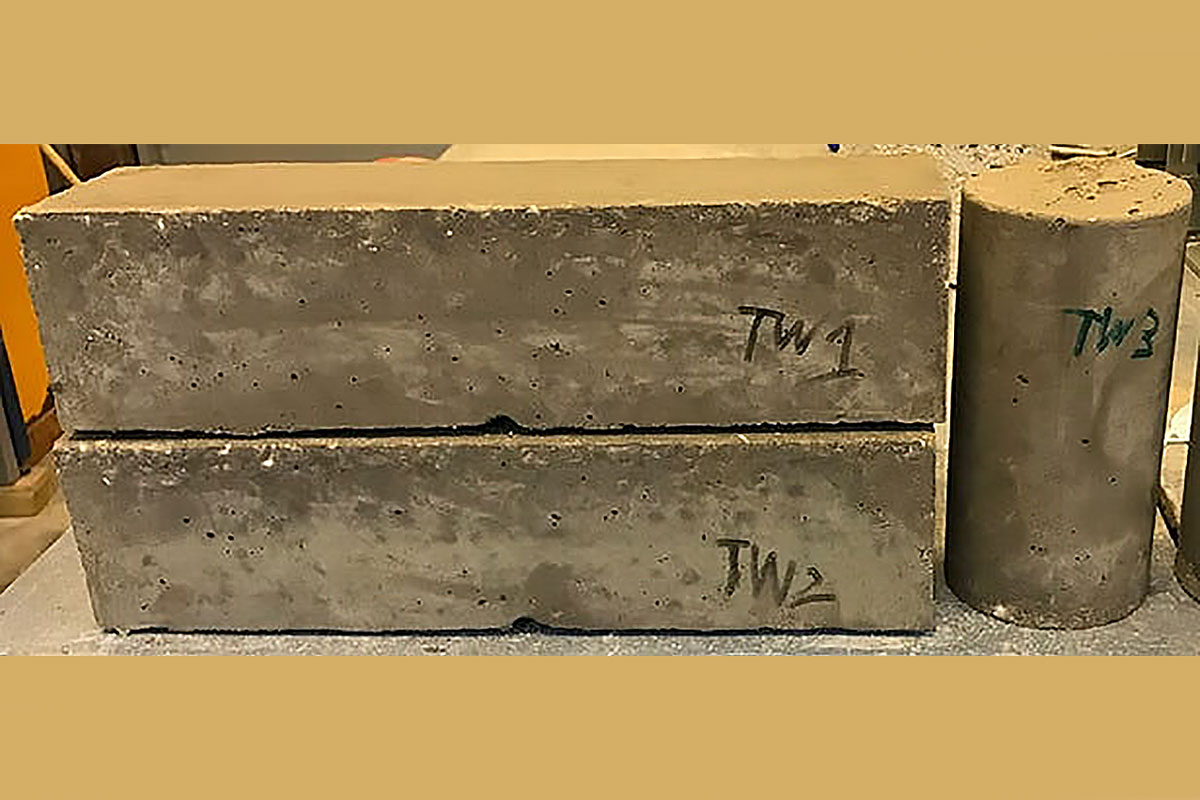Innovative new ‘green’ concrete using graphene
A new greener, stronger and more durable concrete that is made using the wonder-material graphene could revolutionise the construction industry. Experts from the University of Exeter have developed a pioneering new technique that uses nanoengineering technology to incorporate graphene into traditional concrete production.
The new composite material, which is more than twice as strong and four times more water resistant than existing concretes, can be used directly by the construction industry on building sites. All of the concrete samples tested are according to British and European standards for construction.
Crucially, the new graphene-reinforced concentre material also drastically reduced the carbon footprint of conventional concrete production methods, making it more sustainable and environmentally friendly.
The research team insist the new technique could pave the way for other nanomaterials to be incorporated into concrete, and so further modernise the construction industry worldwide.
The research was published in the journal Advanced Function Materials, on April 23, 2018.
“Our cities face a growing pressure from global challenges on pollution, sustainable urbanization and resilience to catastrophic natural events, amongst others. This new composite material is an absolute game-changer in terms of reinforcing traditional concrete to meets these needs. Not only is it stronger and more durable, but it is also more resistant to water, making it uniquely suitable for construction in areas which require maintenance work and are difficult to be accessed. Yet perhaps more importantly, by including graphene we can reduce the amount of materials required to make concrete by around 50 per cent – leading to a significant reduction of 446kg/tonne of the carbon emissions. This unprecedented range of functionalities and properties uncovered are an important step in encouraging a more sustainable, environmentally-friendly construction industry worldwide,” Professor Monica Craciun, co-author of the paper and from Exeter’s engineering department, said.
Previous work on using nanotechnology has concentrated on modifying existing components of cement, one of the main elements of concrete production.
In the innovative new study, the research team has created a new technique that centres on suspending atomically thin graphene in water with high yield and no defects, low cost and compatible with modern, large scale manufacturing requirements.
“This ground-breaking research is important as it can be applied to large-scale manufacturing and construction. The industry has to be modernised by incorporating not only off-site manufacturing, but innovative new materials as well. Finding greener ways to build is a crucial step forward in reducing carbon emissions around the world and so help protect our environment as much as possible. It is the first step, but a crucial step in the right direction to make a more sustainable construction industry for the future,” Dimitar Dimov, the lead author and also from the University of Exeter added.
The paper, Ultrahigh Performance nanoengineered Graphene-Concrete Composites for Multifunctional Applications, is published in the journal Advanced Functional Materials.
The research was supported by the UK’s Engineering and Physical Sciences Research Council (EPSRC).
At the forefront of addressing how graphene can be developed is the Centre for Graphene Science, a collaborative venture between the University of Exeter and the University of Bath.
Collaborations with industrial partners, such as Argans Ltd and Dart Sensors Ltd have been investigating the use of graphene for a new generation of sensors. This research will fill the gap in the sensing market on the detection of traces of atmospheric pollutants (eg, formaldehyde), biomarkers of early-stage disease onset (eg, Parkinson’s Disease), and non-invasive, continuous monitoring of body fluid components (eg, glucose).
The global challenge of creating light-weight and energy efficient technologies is at the core of the interdisciplinary research activity at the Centre which, brings together over 50 academic and research staff and students working in various aspects of graphene research and development.
The pioneering research conducted within the Centre has applications which impact strongly on various societal aspects; a recent interdisciplinary research conducted by the groups of Professor Saverio Russo in Physics and Dr. Monica Craciun in Engineering has led to the discovery of GraphExeter, the best known transparent material able to conduct electricity.
Owing to the unique properties engineered in GraphExeter, this novel material truly holds the promise for transforming the current display industry with the development of ultra-flexible, brighter and more energy efficient wearable displays.
The Centre for Graphene Science is also actively engaging in the production of low-cost graphene inks for future printed electronics. This will be embedded in ultra-lightweight wearable health monitoring devices which will improve significantly the experience of patients.
The vibrant research environment created within the Centre for Graphene Science has stimulated an overwhelming number of scientific discoveries published in more than 430 peer reviewed articles since its foundation in 2009.







